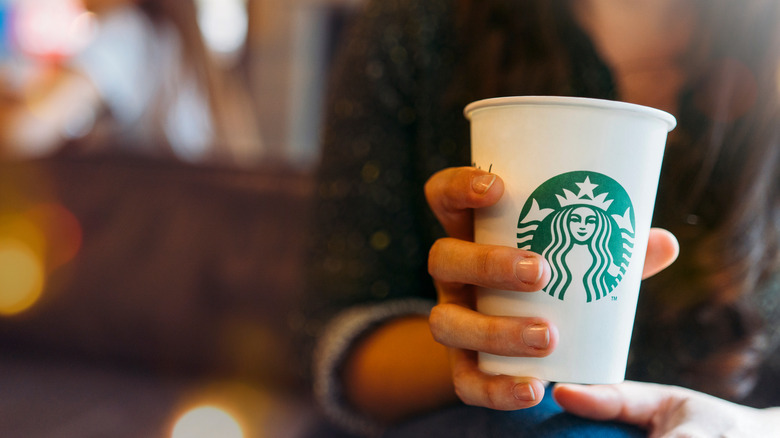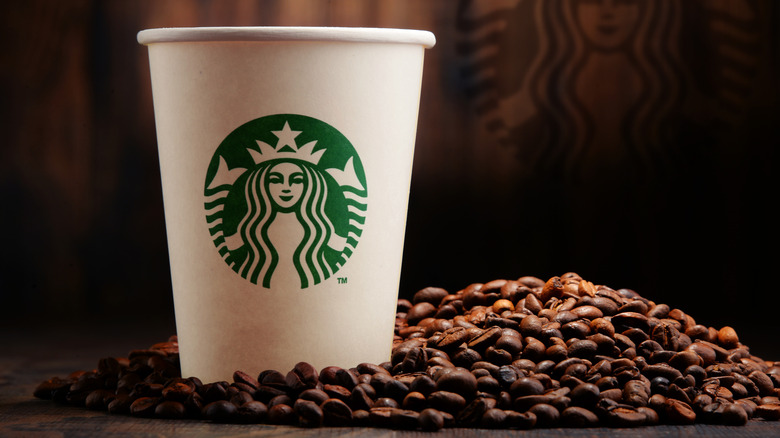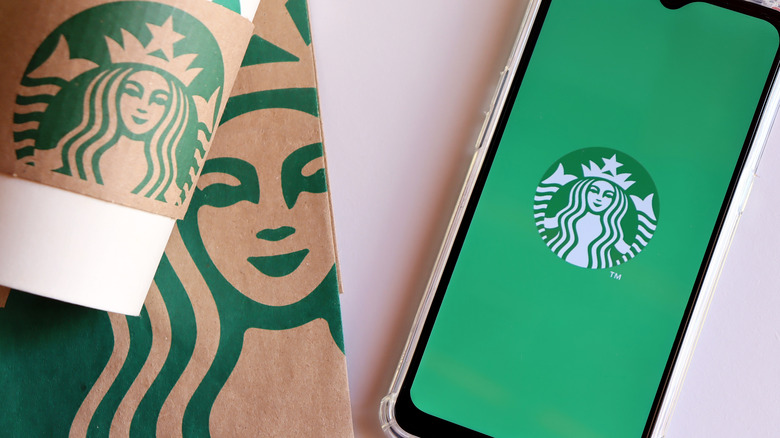Starbucks Didn't Sell Hot Coffee For 12 Years. Here's Why
Although modern Starbucks menus include freshly-brewed caffe americanos, iced chai tea lattes, and just about everything in between, these specialty drinks — which are now synonymous with the company name — were once unavailable. In fact, for the first 12 years of Starbucks history, you couldn't even buy a brewed cup of coffee in any given store. Rather, customers could purchase coffee beans, tea, and spices in bulk, as well as necessary tools used to brew beverages at home. If customers were lucky, they could sample a bit of brewed coffee to help them decide on a product, but that was the only example of a Starbucks "drink" back in the day.
During its early years, Starbucks sold gourmet coffee beans roasted by Peet's Coffee, a local brand in the company's home base of Seattle. Starbucks later began roasting its own beans, and when the business changed hands in 1987, new owner Howard Schultz ushered the Starbucks brand into a new, Italian coffeehouse-inspired era. Having fallen in love with coffee culture abroad, Schultz set about transforming Starbucks into an Americanized version of a classic coffeehouse, meaning it now served drinks to be enjoyed in its cafés.
Starbucks locations began serving hot coffee made from its own roasted beans in-store, and also updated its logo to a more modern design and color scheme, switching from a brown logo (and brown aprons for its employees) to the green shade we associate with the company today.
Why made-to-order coffee drinks were once not as popular
It might be impossible to imagine Starbucks without its signature beverages, but if you understand the culture surrounding coffee in American history, you'll understand why cafés offering drinks on demand were a little slow to debut. In the early 1900s, coffee was advertised as a drink to enjoy at home with the family, as opposed to being something you order and consume in a public setting. Most families would purchase beans in bulk, grinding coffee themselves at home. With this being the established tradition of coffee in America, Starbucks got its start selling beans — not ready-to-drink coffee.
However, by the time Howard Schultz entered the picture in 1983, coffee had taken on more of a public-facing reputation, often served fresh and hot at coffeehouses. Inspired by his travels in Italy, Schultz convinced the Starbucks founders to not only try serving hot coffee by the cup, but to shift their focus from solely selling beans in bulk. Naturally, when Schultz's own coffee company – called Il Giornale — acquired Starbucks, the chain would embrace drink-selling even more.
With coffee becoming an increasingly social experience, more coffeehouses and shops sprang up so that customers could gather with friends and enjoy drinks together. As such, Starbucks soon expanded beyond its hometown of Seattle, and opened 17 stores by 1987 -– including its first location in Canada. As of 2022, Starbucks boasted more than 35,000 stores around the world.
Starbucks continues to push coffee culture forward
As Americans continue to be on-the-go and fixated on productivity, chains like Starbucks are making mid-day coffee breaks easier and easier. Starbucks has expanded its menu beyond just drinks, offering everything from pastries and baked goods to sandwiches and salads. And as more Americans shift toward plant-based milks over traditional dairy milk, Starbucks has followed suit, offering 10 types of dairy and dairy-free milk for most of its menu items.
Custom drinks are another iconic and modern Starbucks offering. According to the company itself, there are more than 170,000 possible custom drink combinations you can try, when you take into consideration all the syrups, sweeteners, cold foams, espresso shots, fruit inclusions, milks, and other ingredients the chain uses in its creations. This sort of in-depth drink-making is quite the step forward from Starbucks' past.
Starbucks even launched its own app in 2009, giving customers the ability to earn rewards, pay, and even order ahead. By 2019, as much as 26% of Starbucks customers were taking advantage of the order ahead option, and the chain began offering the convenience of curbside pickup, in addition to drive-thru, delivery, and in-store pickup for such orders. None of this is to say other coffee chains aren't doing the same, but few can deny that Starbucks is an industry leader and has come quite a long way.



